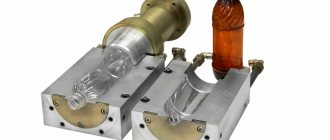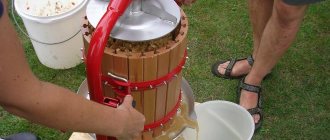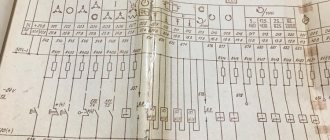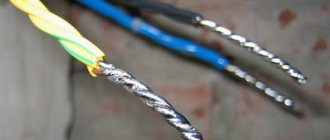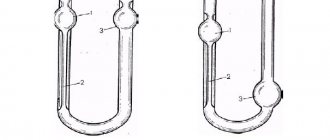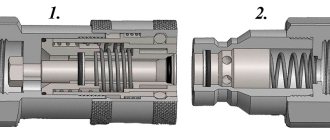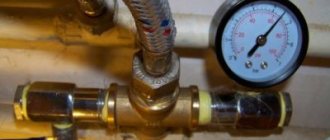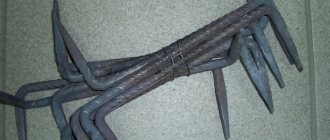Classification
The grape press must be made from environmentally friendly materials. In this regard, only wood and steel are used for the production of units. In addition, devices for pressing juice are classified according to their method of operation, design, and performance.
By way of working
Depending on the type of power supply and method of operation, the following types of equipment are used:
- mechanical and manual grape press - suitable for use in private households, you can do it yourself, but squeezing requires physical effort;
- electric unit - can be screw, pneumatic or hydraulic, characterized by high productivity, low physical labor costs, but expensive (about 30 thousand rubles);
- universal press - the peculiarity is that it can process any vegetables, berries and fruits; such a device operates from the mains.
Electric
Universal
Manual
By material
Equipment for pressing grapes is made of wood or metal:
- Press with a wooden barrel or basket. If it is possible to make a wine press with your own hands, then linden, beech or oak should be used as the material for the basket. These types of wood are durable, dry quickly, and do not crack or warp when dried.
- Metal unit. Structural elements are made of stainless steel, which increases the cost. This press is durable, hygienic, easy to clean and maintain. The contact of grapes with the working elements of the press does not add extraneous odors to the juice.
Made of metal
Made of wood
By volume and power
The productivity of the press is determined by its type, the power of the electric motor and the volume of processed raw materials.
- High-performance units – continuous electric screw presses. They can squeeze up to 5 tons of grapes per hour, their dimensions are: length - 2.2 m, width - 1 m, height - 1.5 m. Motor power 2.2 kW. Such equipment is appropriate for industrial enterprises or winegrowing farms with large volumes of processed material.
- Hydraulic and pneumatic presses are intermittent units. Productivity reaches up to 40 liters of juice from one bookmark. They are used if you plan to make wine regularly or organize craft production.
- For small volumes in the household, it is advisable to use a self-assembled screw grape press. Its performance is determined by individual needs. Devices with basket volumes from 2.5 to 25 liters are manufactured industrially, allowing you to get from 1 to 25 liters of juice in one batch, respectively.
By design
According to their design features, presses are divided into:
- Screw presses are mechanical presses for squeezing grapes with your own hands. The working container is a wooden basket or a perforated metal barrel, into which crushed pulp or whole grapes are placed. The spinning process is carried out by rotating the handle of a pressing element mounted on a screw auger or rod. Screw presses are simple and trouble-free; productivity depends on the size of the basket.
- Jacking – pressing is carried out using a piston (jack). It can be fixed from above, the pressing force, in this case, is supplied to the pressure plate. If the jack is secured from below, then the basket rises to the fixed pressure plate. In either case, the grapes are compressed between the bottom of the basket and the plate. It is convenient to work with such a press without exerting significant physical effort. They are manual, hydraulic or pneumatic.
- Screw - divided into manual and electric. The principle of operation is similar to a meat grinder and lies in the fact that, thanks to the auger, the pulp is mixed relative to the drainage perforated surface and is subjected to active mechanical action. This treatment can crush the seeds and grind the skins of the grapes. Phenolic and nitrogenous substances pass into the wort. A suspension may form in it.
- Lever ones are the most primitive type. A bag of grapes will be placed between the board and the lever hinged to it. Due to the force applied to the lever, the berries are squeezed between the pressing surfaces. Such presses are leaky, labor-intensive, and low-productive compared to jacking and screw machines.
Lever
JackScrew
Screw
Hydraulic and screw presses for squeezing juices are:
— With basket and piston
A bag for filtration is placed in the barrel, then the crushed raw materials are placed, the edges of the bag are wrapped, a piston is placed on top and the juice is squeezed out. The barrel and piston are usually made of hardwood or stainless steel. Wooden presses look more beautiful and atmospheric, but a stainless steel press is more practical.
Press made of stainless steel and oak.
— With bars
This is a press with many grates, between which bags of chopped apples or grapes are placed. The number of such gratings can even reach 20. However, using such a press is not so convenient, since it takes a lot of time to fold all 20 layers.
Types of designs: diagrams and drawings
The main thing in the press is a solid base and working mechanism.
Operating principle of the device:
- prepared raw materials for pressing (chopped apples) are placed in fabric bags layer by layer through drainage grids;
- With the help of a mechanism, pressure is lowered from above and presses the juice.
A good press squeezes out 65-70% of the juice, leaving an almost dry pulp. It’s quite possible to make one with your own hands.
Homemade press designs differ in the operating principle of the main mechanism:
- Screw.
- Based on the jack: mechanical and hydraulic.
- Combined.
In the bulk of structures, pressure is exerted from above, but in the combined version, compression occurs in two directions: using a screw mechanism at the top and a hydraulic jack at the bottom.
The juice press consists of the following parts:
- stable bed;
- a quadrangular or cylindrical body, inside of which bags of chopped apples are folded;
- wooden lattices with which the bags are placed so that they do not spread out;
- piston-pressure, directly exerting pressure on the cake;
- jack support;
- working mechanism: screw with handle, mechanical or hydraulic jack;
- bowl-tray
The main body can be:
single perforated: juice will flow through the holes along the walls and through the bottom into the tray;
Screw apple press with single perforated body
- double: a solid casing with a slightly larger diameter is placed on a perforated metal cylinder;
- in the form of a solid metal body with one drain hole at the bottom;
- assembled from wooden slats connected with hoops - a barrel. The walls serve as a drainage grid.
Screw press for apples with a body made of wooden slats There may be no body at all - just a pyramid of wooden lattice frames in a tray with a mouth at the bottom, under which a container for juice is placed.
Hydraulic Frame Press
This design is easy and quick to install. For the bottom plate, you can take a piece of countertop, for example.
2) Garden hydraulic presses for squeezing juice from apples, fruits, grapes and berries
1 - With jack
The hydraulic press for apples and grapes is a strong rectangular frame with a stop for the jack rod in the center. The jack can be located either from above, pressing on the piston, or from below, lifting the entire barrel with the piston and pan upward. The jack is easy and convenient to use. Such a press is easy to handle even for a woman, since the jack creates a big gain in strength.
The only drawback is that the stroke of the jack rod is not enough for the entire height of the barrel and wooden blocks must be placed during the process of squeezing the juice.
This problem can be solved by purchasing a two-stage jack, but the price of such a jack is about 30-40 euros (a regular 2t jack costs about 10-12 euros).
Watch the video of a homemade apple press with a two-stage jack:
2 - With hydraulic cylinder
This design already applies to an industrial apple press. In the frame of such a press there is a hydraulic cylinder, as well as a pump, which supplies hydraulic oil to the cylinder piston. This apple press has high productivity and barrel volumes of 50, 100 and 200 liters. With the help of such a press it is very convenient to squeeze out juice. After all, the piston stroke length is selected so that it is enough to cover the entire working height of the barrel.
However, due to the more complex design, the price of such a press is much higher, and such a press design is justified only for professional use, for example, for a line for the production of directly pressed juices.
Hydraulic cylinder presses are manual and semi-automatic. The semi-automatic press is an electric press for grapes and apples. Juice is extracted with the press of a button, and raw materials are loaded and unloaded manually.
Step-by-step instructions for making it yourself
Before making a wine press with your own hands, you need to decide what material it will be made of. And its working principle. We will consider a screw mechanism, since a lever mechanism cannot be made at home. To make such a design, you do not need to obtain special skills and knowledge.
It is important to use environmentally friendly materials. They should not absorb the squeezed juice
Some craftsmen use improvised means for these purposes, for example, a washing machine drum, a car jack, an old wooden barrel or a beer keg. Of course, you can specifically buy new materials.
What you need
There are several basic press options. Let's look at one of them. It will require:
- Capacity. Made from wooden planks. You will need 20 pieces, 320-350 mm high, 45-55 mm wide, 15 mm thick.
- Metal plates for making a tightening hoop and fastening. A metal thickness of 0.5 mm to 1 mm will be sufficient.
- Screw.
- Jacking mechanism.
- Pressing plane. The piston can be made of wood or plastic.
- Tray for collecting juice. You can take a regular plastic basin.
- Fastening elements. Bolts, angles, screws.
A minimum set of tools will be required.
When assembling, you need to have a set of plumbing tools:
- screwdrivers, screwdriver;
- hammer;
- hacksaw for metal and wood;
- pliers;
- a set of spanners or open-end wrenches;
- roulette.
Step-by-step instruction
The design will remain unchanged, but some of its elements may have different appearance or features. However, the assembly instructions will remain almost unchanged.
To begin with, a description of the assembly of the classic version. Afterwards we will look at the differences between the others.
The press is assembled from wood as follows.
- The planks are laid out in a row. Strips of metal are placed on top and bottom of them. Using self-tapping screws, the metal is fastened to the board, and you need to leave a distance of 10-12 mm between the boards. Having thus attached all the planks, the structure is rolled up, and the ends of the stainless steel strips are fastened with bolts. It turns out to be a basket.
- We measure its internal diameter. And according to this size we make a piston (punch). It can be made of wood by cutting out a circle of the required diameter. Be sure to leave a gap between the edges of the piston and the basket. The diameter of the circle will be less than the inner diameter of the basket from 1 to 2 cm.
- The pressure on the piston will be applied using a screw and a handle.
- The body (frame) is assembled from metal plates or wooden blocks according to the actual dimensions of the structure. We fasten all parts using bolted connections or welding. A pallet is placed in its lower part, a basket is placed on it and the berries are placed in it. A piston is placed on the berry. A hole is made in the pan, and a tube is attached to it to drain the juice.
- A screw with a handle is fixed in the press body and its lower end rests against the piston. The installation is now complete.
Car jack
Instead of a screw with a handle, you can use a car jack. It is installed in the upper part of the unit, placed on the piston, and its upper part rests against the frame. Otherwise everything is unchanged.
A simple diagram of a press.
Made of stainless steel
Sometimes a basket is made from stainless steel. In this case, take a ready-made container or adapt a drum from a washing machine. The process of making a basket will be more complicated and special equipment will be required.
The tanks are cut, two cylinders are made from stainless steel sheets. The seams are welded. We get 2 cylinders with different diameters - 23 and 29 cm in diameter. Holes are drilled in the walls of a container with a diameter of 23 cm in a checkerboard pattern for better collection of juice; it will be used as a basket. The second container is used to collect juice.
There are two options. The bottom of the cylinder can be welded and the tube removed. Or the structure can also be placed in a basin. Or make a special pallet. In such a tray, you can bend the side on one side and drain it.
As a punch, you can use a flange with a diameter of 21 cm.
From a beer keg
This option is slightly different. The top of the keg is cut off, and a tube comes out of the bottom. The keg will need to be processed so that there are no sharp edges or burrs left.
Types of devices
Before purchasing a press for squeezing grape juice or other fruits and vegetables, you need to carefully study all the varieties of these devices.
All industrial squeezing presses can be divided into the following categories.
Mechanical press
Such a device is a stationary cast-iron base on which a special basket made of wood is installed. This solution has good performance, reasonable price and small dimensions. Many winemakers consider a mechanical device for squeezing fruits and vegetables to be the ideal solution for creating juice at home.
Electric press
This subgroup includes two more types of press: hydraulic and pneumatic. Such devices are made of excellent quality stainless steel, so the press will not rust. This solution will not add any off-flavors to your juice. A hydraulic press operates using water, while a pneumatic press operates using high air pressure, which is created by a special pump. Both the hydraulic and pneumatic versions of the pump operate only on electric current.
The main advantage of this solution is the high performance of the device.
Universal press
Many people want their device to be able to squeeze juice not only from grapes, but also from any other fruits and vegetables. Universal presses have long established themselves on the market and are in great demand because they can be used to squeeze juice from apples, cherries, oranges and other crops. This significantly expands the possibilities for making juices and wines.
Every winemaker can buy a five-liter device for pressing grapes and use it at home. All press options are similar in function, however, the material from which the structure is made often differs. The most popular are 2 types of devices: a press made of wood and metal.
- The wooden version
is environmentally friendly and does not cause any harm to human health. However, it is very difficult to care for such a device, since after each use you will have to rinse the device very thoroughly and disinfect it. - The metal version
of the device is an alloy of cast iron and stainless steel. If the design is based on metal, then this device will be durable. The press, made of metal, is very easy to use and is hygienic, as it does not impart any unnecessary tastes or odors to the resulting grape juice.
Wooden basket
The separator basket is a kind of sieve that retains the pulp but allows the juice to pass through. Traditionally it is made of stainless steel. But you can make it yourself from wooden blocks (it is advisable to use oak or other hard wood) and metal tape.
At home, the easiest way is to make a non-separable separator. To do this, the bars are attached to the tape at regular intervals using stainless steel screws, leaving a small gap between them. This kind of mat is then wrapped around the piston to fix the desired diameter. After this, tighten the last pair of screws. A wooden barrel like this with slots will quite successfully replace stainless steel.
For greater convenience, the separator can be made collapsible. To do this, you can assemble it from two halves, connecting them with pins. This design will be much easier to clean.
Important! When using a wooden separator, be sure to rinse and dry it after spinning to avoid infection with mold fungi!
Tips for use
The quality of the resulting juice depends on how the grape press is made and how it is operated. Before starting work, the grapes must be washed, sorted, and the berries separated from the bunches; they do not need to be peeled. It gives juice and wine a pleasant bouquet.
Raw materials for pressing:
- whole berries, used for juice production;
- pulp, allows you to fully reveal the aroma of grapes, recommended for obtaining wine materials.
Sequence of actions when working with the press:
- Fix the device motionless on a horizontal, flat surface to avoid displacement.
- Prepare a container for collecting the pulp. This could be a bucket, tank, pan.
- Place a container under the outlet hose or chute into which the juice will drain.
- Place a plastic bag over the piston plate to prevent the piston from rubbing against solid pulp particles. Rotate the handle to set the screw to the top position.
- Cover the inner surface of the press basket with a clean, cold-water-washed, white, coarsely woven cloth (you can use material from flour or sugar sacks). The edges of the fabric should hang over the sides of the basket. This will make it easier to remove the pulp.
- Place pulp or berries in the basket, cover with the hanging corners of the fabric. Place the basket under the piston.
- Tighten the press screw until juice appears. Slowly turn the screw with the handle until significant resistance is felt.
- Stop the rotation of the screw. After a break of 30-60 seconds, start turning the screw again. This technology allows you to most fully open the cell membranes of grapes.
- After the juice stops flowing, use the handle to turn the screw to the top position.
- To better squeeze the grapes, repeat the process of rotating and stopping the screw 2-3 times.
- After the spin is completed, the press screw should be returned to its original position, turning it in the opposite direction.
- Remove the contents of the fabric from the basket. Transfer the pulp into a previously prepared container. Add a small amount of water so that it covers the cake by 1-2 cm. After 3-4 hours, warm the mixture to 65 degrees. This will allow you to extract as much juice as possible. Spin again. It is not recommended to squeeze the pulp more than three times; this leads to the accumulation of suspension in the wort.
- After completing the process, disassemble the device, clean all parts, rinse well, wipe and dry. To wash the basket, regardless of whether it is made of wood or metal, synthetic detergents should not be used. You can use soda or table salt.
- The press should be stored in a dry, ventilated area.
If a wooden basket becomes moldy, it should be washed with cold water and thoroughly brushed. Then you can prepare a solution of sulfuric acid (100 g per 2 liters of water) and wipe the entire surface of the basket with it, using a brush or piece of cloth. After two days, rinse with lye (an aqueous solution of wood ash) to neutralize the acid, then with clean water.
Read also: Simple landscape design for a small area in front of the house
Another way to get rid of mold is to coat the surface of the basket with lime. After two days, clean everything and rinse with water. Then treat the basket with sand and rinse with a solution of ammonia (3 tablespoons per 5 liters of water). If the mold is not old, you can scrape it off with a knife, then steam the basket with oak sawdust. Moldy parts of the press basket should not be washed with boiling water. This will cause the mold to eat into the wood surface.
Professional winemakers distinguish two types of juice used as wine material:
- obtained by gravity;
- isolated by pressing grapes.
Containers for must and wine
The first thing you need to start equipping a home distillery is purchasing containers in which the wort will ferment, as well as strain and store the wine. It can be:
- Glass bottles,
- Oak barrels and tubs,
- Stainless steel tanks.
Regarding the use of plastic containers and utensils made of other metals for wine production, you need to take into account that wine alcohol tends to acquire the taste of the material from which the container for storing it is made.
Raw material grinding
For this operation there are special crushers for grapes and fruits. These devices can
be
- Manual - for delicate chopping of small volumes of fruits,
- Mechanical - for intensive work and speeding up the process.
Grape crushers can be equipped with a destemmer to separate the branches (ridges) from the grapes.
Pulp pressing
No home wine production can do without separating the juice from the pulp. A press can handle this operation perfectly; it can be manual or mechanical.
- A manual press is a basket for pressed mass with holes, equipped with a mechanical head with handles.
- A mechanical (hydraulic) press is a basket for crushed pulp with a membrane in the center that expands when it is filled with air.
Under the basket of any press there is a tray with a spout for draining the squeezed liquid. After collecting the valuable juice by gravity, the remaining mass is pressed until it is completely squeezed out.
Fermentation and filtration
Wine in fermentation containers should not come into contact with oxygen. Special fermentation tanks
for wort they must be equipped with water seals. They allow carbon dioxide to be removed and protect the wort from air, and also allow you to control the end of the fermentation process. Hydrometers are used to measure the alcohol content of young wine.
Fermentation is followed by a stage of filtration and removal from sediment. The purpose of this stage is to separate the wine from the yeast that has sunk to the bottom of the container, so as not to degrade its quality. For this purpose, such equipment for wine as a filter press equipped with a pump has been created. Passing through the filter board of this apparatus, the wine is cleaned of colloids, microorganisms, mechanical and adsorption particles. The device is equipped with a pressure gauge that controls the fluid pressure. After such filtration, the wine becomes significantly brighter.
Maturing and capping wine
Aging young wine gives it a special taste and aroma, especially if it takes place in oak barrels. Tannins and oak tannins add a unique accent to the overall bouquet of the drink. If the maturation of wine is planned to be carried out directly in bottles, then in-line and vacuum bottling machines have been created for the production of the drink. Their advantage is that during bottling, the contact of the drink with oxygen is minimized, which guarantees its quality.
It is convenient to cap bottles using a special device for securely placing the cork in the neck. These devices, mechanisms and devices greatly facilitate the work of a winemaker in preparing wine at home.
Attention, TODAY only!
Rules of application
Once manufactured, the press can be placed and secured to any support. Before use, the grape crusher must be placed on a flat surface and secured well.
The manual crusher must be installed on a container to collect pulp. To do this, you can use barrels or tanks made of plastic or stainless steel. To obtain juice, berries are loaded into the loading ladle. From there they are poured onto windrows. A strong napkin must be placed at the bottom of the basket, from which the pulp is then removed.
When rotated, the berries are crushed and then turned into a mass like a puree, from which juice comes out. Before loading the berries into the receiving bucket, they are removed from the bunch and washed well. There is no need to remove the skin from the berries; thanks to it, the juice has a pleasant aroma.
After processing the crop, the device should be thoroughly washed and dried to avoid rotting. A homemade press greatly simplifies the work of processing berries, especially when the harvested crop is about 200 kg.
Video about the principle of operation of the grape press:
We bought it in Ukraine, according to an advertisement. It is popularly called a grape press. For ourselves, we defined it as a press for obtaining juice from grapes, or simply a press for grapes. The advertisement for the sale of the press was given by a man who, in Soviet times, did his own tinkering at the factory, like many in those days.
| The design is simple: a hand press, a stainless steel cylinder with holes and a tray with a groove through which the juice flows. |
| True, the press and cylinder turned out to be fairly smeared with some kind of technical lubricant - either grease or something else. And, of course, before pressing the juice, it was necessary to wash it thoroughly. We asked the seller what the press is smeared with and what is the best way to wash it off, since we want to use it to obtain a food product. The seller replied that he himself probably did not know what kind of lubricant was used. For cleaning, I advised taking “Galosha” technical gasoline for degreasing, “Fairy” type dishwashing detergent and alcohol. We didn’t take risks with gasoline; we were afraid that it would be difficult to wash later, so we washed it right away with Fairy, and then with industrial alcohol. The most difficult thing was to wash the threads on the press, which can only be done with a fine brush. |
| Washed and dried. Carefully secured it to the table. And they started squeezing the juice. And since we did not have instructions for its use, and, unfortunately, the Internet was not “at hand,” we mastered the nuances in practice. |
| The first problem was that the piston came off the press; it took a long time and with difficulty to strengthen it, because the hole in the piston for attaching it to the press was not centered. And how they put him on the press in the first place is unclear. |
| The second problem is to secure it so that the press does not move during operation and does not fall. By the way, it weighs more than 10 kg. The cutouts for the bolts on the base are very small. Well, these problems have been solved. We drilled a hole in the center of the piston and secured it to the press. We attached the press to the table, placing washers under the screws. True, they had to make holes in the table, but they didn’t come up with another option. |
| And they began to squeeze the juice from the grapes. The effort, as it turned out, needs to be made unfeminine. At the same time, juice splashes through the holes in the press cylinder when the grapes are crushed, and even grape seeds shoot out, falling into the pan with juice. As we found out later, to prevent this from happening, you need to put the grapes in a canvas bag and then squeeze the juice out of it. |
| Lowering the piston to the very end, when the handle of the press touches the body, you realize that this is not the very bottom. That is, what remains is a “pancake” of grapes 4.5 cm high. And in these 4.5 cm there are even whole berries. |
5) Hydropress for pressing juice from apples and grapes
Such a press squeezes out juice using water pressure in the water supply. The crushed raw materials are poured into the stainless steel basket and the lid is closed.
In the middle of the basket there is a rubber membrane, which expands under water pressure and squeezes out the juice.
Such presses for making juice from grapes and apples are produced with basket volumes from 20 to 200 liters, but the price of such a press is 20-40 liters several times more expensive than the price of a press with a hydraulic jack or the price of a screw press. Such a press pays off only if there is a large volume of juice being squeezed out, since it is semi-automatic and easy to use.
Also, the hydraulic press membrane may break over time and then you will have to buy a new one.
And such a press requires a water supply with a created pressure of 2-3 atmospheres.
Recommendations for obtaining high-quality juice from berries
One of the main recommendations for working with a press is the need to wash the berries before loading. Only after removing them from the bunch and thoroughly washing them in running water, the material is loaded into the apparatus (drum).
Winemakers who are professionally involved in grape cultivation divide it into 2 levels:
- fruit juice obtained by gravity;
- using a press.
In the first case, the liquid is the most valuable, as it is rich in taste and useful substances. In the second option, you can squeeze out the juice in 2 stages, that is, recycle the pulp. For varieties such as Chardonnay, white Muscat, Pinot Noir, secondary processing is not recommended, since the taste characteristics are significantly affected.
Advantages and disadvantages of a homemade press
Let's start with the good: you will make a press with your own hands, choose the size and design that is convenient for you personally. And if you have all the necessary tools at home, wood and stainless steel, such a press will come out cheaper than a store-bought one. You can show off your talent to your friends and family.
But let's look from the other side: for the first time you decided to make something with your own hands and chose a press. There are no tools, materials and a jack need to be purchased, but for food products wood and metal are more expensive. Without experience, it will be difficult to obtain smooth parts and welding.
Due to improper design, the spin will be weak, you will waste your energy, time and money.
For beginners, I advise you to start with something simpler, and if you really need it, buy a press in a store. Just choose stainless steel models. For example, this one even comes with a jack.
Mechanism components
- frame;
- a tray into which liquid flows;
- the pressing element itself;
- barrel;
- fine mesh;
- spin-intensifying screw.
The principle of operation of the device is simple: berries are loaded in portions, then the screw is turned and juice with pulp is obtained, which passes through the filter mechanism and is separated from the pulp.
In addition to the fact that the crusher squeezes juice, it can also be used to ferment various drinks. Also, the part that presses and the food material are practically not in contact; therefore, heating is minimal, which ensures the safety of all vitamins and nutrients in the drink.
